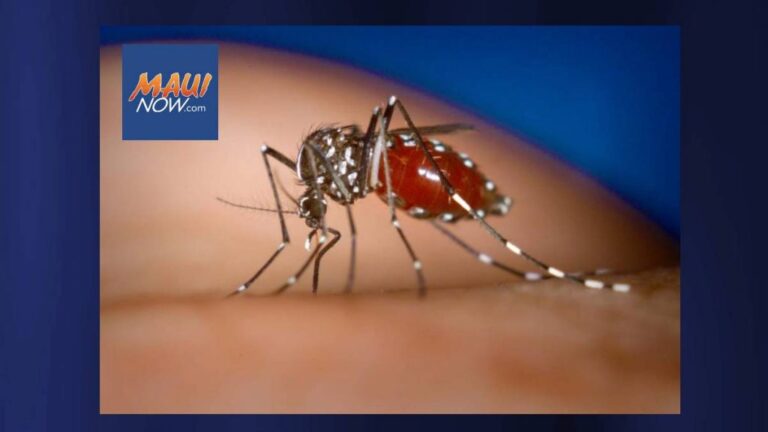The Hawaii Department of Health (DOH) reported today two travel-associated cases of dengue virus infection, one on Kauai and one on Maui. The infected individuals had traveled to areas known to be dengue-endemic. DOH teams have been deployed to test and control the affected areas for mosquitoes.
Communities are urged to work together to reduce the risk of transmission within their communities by following the best practices outlined below.
This is the first dengue case to occur on Kauai in 2024 and the second dengue case to occur on Maui in 2024. There have been eight travel-related dengue cases confirmed in the state this year (one on Kauai, two on Maui, and five on Oahu). Exposure to these cases occurred in various locations around the world. Multiple locations around the world are currently experiencing higher than normal dengue activity.
Dengue symptoms are generally mild or severe and include fever, nausea, vomiting, rash and body aches. According to the Ministry of Health, symptoms usually last for two to seven days and most people recover in about a week, although the illness can be severe and life-threatening. The Ministry of Health advises anyone who has traveled recently and is experiencing these symptoms to contact their healthcare provider.
The dengue virus spreads from infected people to mosquitoes and then to people. Although Hawaii is home to dengue-carrying mosquitoes, dengue is not endemic (established) in the country and currently only affects tourists. Dengue outbreaks occur in many parts of the world, including Central and South America, Asia (including the Philippines), the Middle East, Africa, and parts of the Pacific Islands, including the U.S. territories of American Samoa, the Federated States of Micronesia, the Republic of the Marshall Islands, and the Republic of Palau, and in many popular tourist destinations in the Caribbean, including Puerto Rico.
Anyone who plans to travel or has traveled to areas where dengue is endemic is at risk for infection. Currently, the U.S. Centers for Disease Control and Prevention (CDC) advises travelers to take the usual precautions when traveling to dengue risk areas, including using an Environmental Protection Agency (EPA)-registered insect repellent, wearing long-sleeved shirts and long pants when outdoors, and sleeping in a room with screens, air conditioning, or insecticide-treated mosquito nets.
As some countries are reporting increased cases, it is important to check the country’s travel information 4 to 6 weeks before traveling for the latest guidance on dengue risks and prevention measures in that country. Travellers returning from areas with a risk of dengue should take precautions to avoid mosquito bites for three weeks and seek medical attention if they develop dengue symptoms within two weeks of returning home.
In areas where dengue is suspected or confirmed, Hawaii Department of Health personnel (Vector Control Division) conduct testing and mosquito reduction activities. Reducing the mosquito population reduces the chances of transmitting dengue to others. In areas where dengue cases have not been reported, it is a good idea to eliminate mosquito breeding sites in and around your home. Mosquitoes breed in small amounts of standing water. Common breeding sites in the home include:
- bucket
- Water-trapping plants (such as bromeliads)
- Small container
- planter
- Rainwater tank
- Cups placed outside
Simply discard any accumulated water in the container and you will eliminate any chance of mosquito breeding.
Finally, no matter where you live, if you are in a mosquito-prone area, wear long sleeves and long pants or use an EPA-registered, approved repellent to reduce your chances of being bitten, especially at dusk and dawn.
For more information, please visit the Division of Disease Outbreak Control (DOCD) website and the Vector Control Branch (VCB) website.


